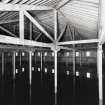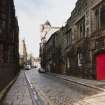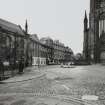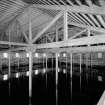Edinburgh, 555 Castlehill, Reservoir
Commemorative Monument (19th Century), Reservoir (19th Century), Witch Association (Medieval)
Site Name Edinburgh, 555 Castlehill, Reservoir
Classification Commemorative Monument (19th Century), Reservoir (19th Century), Witch Association (Medieval)
Alternative Name(s) Ramsay Lane; Castlehill Reservoir
Canmore ID 74033
Site Number NT27SE 492
NGR NT 25395 73541
Datum OSGB36 - NGR
Permalink http://canmore.org.uk/site/74033
- Council Edinburgh, City Of
- Parish Edinburgh (Edinburgh, City Of)
- Former Region Lothian
- Former District City Of Edinburgh
- Former County Midlothian
NT27SE 492 25395 73541
Reservoir
Roman coin found 1850 [NAT]
OS 1:1250 map, 1970.
See also under general views of Castlehill and Ramsay Lane.
For probable removal of Telfer Wall in the course of construction, see NT27SE 14.00.
For discovery of Roman coin, log-coffins and other remains in the construction of this reservoir, see NT27SE 53 and NT27SE 121.
This reservoir was constructed in 1851 to comply with the provisions of the Edinburgh Water Company's Act of 1847, and as part of the comprehensive upgrading scheme that which was occasioned by the evident inadequacy of the system.
A masonry construction, it is situated at an altitude of 340ft (104m) OD, measures 30ft (9.1m) in depth, and has a capacity of 1,715,625 gallons (7799 cu m). The contractor was John Alexander and the approximate cost £10,153.
J Colston 1890.
Castlehill Reservoir, Castlehill. Long low ashlar block by Rendel and Beardmore, 1849-50; James Leslie (Playfair's pupil) was the engineer in charge.
Channelled base; pedimented door to Castlehill. In the middle of the Ramsay Garden front, an Italianate tower on a blind basement. On the W wall an Art Nouveau drinking fountain by John Duncan, 1894, commemorating the execution of witches near this spot. Bronze relief of witches' heads entwined by a snake.
J Gifford, C McWilliam and D Walker 1988.
A reservoir was first built at the top of the High Street as early as 1675, but was demolished in 1849 to make way for the present structure. It is currently intended to lower the water level and to floor and seal over the cistern so that alternative [additional] use may be made of the building.
A Wright 1989.
RCAHMS photographic survey of about 1988 (when it was still in use) record a slightly hipped roof with projecting ventilators, which was supported by internal columns (apparently of cast iron) and roofing- timbers. The interior was then occupied by a single open tank; a surrounding walkway gave access to the interior walls, and small windows afforded illumination.
Water entered the reservoir through a series of inlets set in one of the corners. These were labelled in succession: 'Swanston', 'Colinton', 'Crawley', 'Comiston' and 'Swanston overflow from Castle'. The second and third of these were larger than the others.
Information from RCAHMS (RJCM), 24 November 2005.
NMRS, B/05801-8.
Construction (1849 - 1850)
Project (1997)
The Public Monuments and Sculpture Association (http://www.pmsa.org.uk/) set up a National Recording Project in 1997 with the aim of making a survey of public monuments and sculpture in Britain ranging from medieval monuments to the most contemporary works. Information from the Edinburgh project was added to the RCAHMS database in October 2010 and again in 2012.
The PMSA (Public Monuments and Sculpture Association) Edinburgh Sculpture Project has been supported by Eastern Photocolour, Edinburgh College of Art, the Edinburgh World Heritage Trust, Historic Scotland, the Hope Scott Trust, The Old Edinburgh Club, the Pilgrim Trust, the RCAHMS, and the Scottish Archive Network.
Field Visit (20 August 2002)
Relief of snake coiled in horizontal figure of eight around man's head on left and woman's head on right, with foxglove behind. Integral rectangular trough below (at waist height). Its front has a flowing design of tree branches, the left side has detail of frowning person's eyes and nose with 'the evil eye' written below; the right side has hands holding a bowl with 'hands of' written above and 'healing' written below it.
Inspected By : D. King
Inscriptions : Top left of relief (incised Roman numerals): MCCCCLXXIX
Bottom right of relief (incised Roman numerals): MDCCXXII
Left side of trough: the evil eye
Right side of trough: hands of / healing
On plaque above: THIS FOUNTAIN, DESIGNED BY JOHN DUNCAN, R.S.A. / IS NEAR THE SITE ON WHICH MANY WITCHES WERE / BURNED AT THE STAKE. THE WICKED HEAD AND SERENE / HEAD SIGNIFY THAT SOME USED THEIR EXCEPTIONAL / KNOWLEDGE FOR EVIL PURPOSES WHILE OTHERS WERE / MISUNDERSTOOD AND WISHED THEIR KIND NOTHING / BUT GOOD. THE SERPENT HAS THE DUAL SIGNIFICANCE / OF EVIL AND WISDOM. THE FOXGLOVE SPRAY FURTHER / EMPHASISES THE DUAL PURPOSE OF MANY COMMON OBJECTS.
Signatures : Bottom left corner of wall relief (incised letters and numbers): 18 (JD) 94
Design period : 1894
Year of unveiling : 1894
Information from Public Monuments and Sculpture Association (PMSA Work Ref : EDIN0558)
Project (2007)
This project was undertaken to input site information listed in 'Civil engineering heritage: Scotland - Lowlands and Borders' by R Paxton and J Shipway, 2007.
Publication Account (2007)
This apparently single-storey ashlar masonry covered reservoir near the head of The Royal Mile was built in 1849–50 for the purpose of storing 1.65m gallons of water for the supply of the upper end of the Old Town and is not what it seems from its exterior. Much of the reservoir building is below ground, with retaining walls of ashlar masonry about 10 ft thick at the base tapering to 6 ft at the top founded on rock, creating a reservoir more than 100 ft square and about 25 ft deep. The timber-truss roof is supported on the outer walls and by 24 slender hollow cast-iron columns 9 in. in diameter sited within the reservoir. The building was designed and built under the direction of James Leslie, engineer to the Edinburgh Water Company. In 1991 the reservoir was no longer required and is now tastefully conserved as the Edinburgh Tartan Weaving Shop from a visit to which its original purpose and construction can still be appreciated. This reservoir replaced a smaller cistern, 43 ft by 28 ft by 6 ft, from one of Scotland’s earliest piped water supply schemes by which a supply of ‘sweet’ water was obtained for the town by means of gravity through a 3 in. diameter cast-lead pipe from Comiston springs at Tod’s Well on the Pentland Hills three miles to the south. The elevation of this well is indicated at Castlehill by the cannonball in the wall of Cannonball House.
From either this or a smaller Castlehill cistern at the same site, water was introduced by gravity to five stone wells on the High Street in 1681, and later to lower wells, including the one which still exists in the Grassmarket. From these wells women ‘caddies’ drew the water for households. The engineer for this great public health improvement was George Sinclair, a former professor of philosophy and mathematics at the University of Glasgow. The system was improved later by J. T. Desaguiliers who directed the laying of a four and a half inch diameter lead main from Comiston with 13 air valves and four cleansing cocks in ca.1720.
R Paxton and J Shipway 2007
Reproduced from 'Civil Engineering heritage: Scotland - Lowlands and Borders' with kind permission of Thomas Telford Publishers.
Watching Brief (30 October 2012 - 14 December 2012)
From NT 25375 73515 to NT 25507 73532 A watching brief was undertaken, 30 October – 14 December 2012, during ground-breaking work associated with the replacement of a low pressure gas main. A large arched tunnel constructed of mortar bonded sandstone was recorded below the roundabout opposite the Hub, and it runs from Castlehill in the direction of Upper Bow. Two negative features were also recorded in the service trench; the first opposite the Camera Obscura and the second opposite the Ramsay Lane Reservoir. The former produced a single fragment of 13th-century Scottish White Gritty Ware.
Archive: RCAHMS (intended)
Funder: City of Edinburgh Council Archaeology Service
Jake Streatfeild-James, AOC Archaeology Group, 2013
(Source: DES)


























































